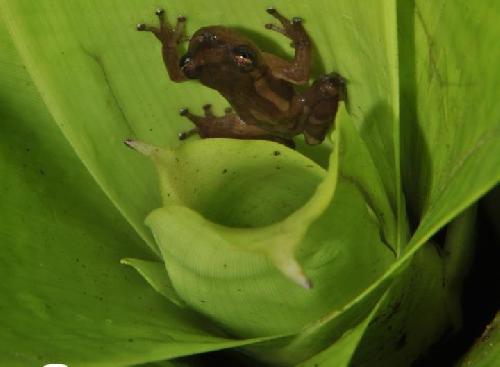A new tree frog species, Dendropsophus bromeliaceus, spends its tadpole stage in pooled water that collects in bromeliad plants in the Brazilian Atlantic forest, according to a study published December 9, 2015 in the open-access journal PLOS ONE by Rodrigo Ferreira from the Utah State University and Universidade Vila Velha and colleagues.
Scientists compared the tree frog molecular data with closely related frogs and found it is a new species in the Dendropsophus genus. They named the species Dendropsophus bromeliaceus and gave it the common name Teresensis' bromeliad treefrog, which refers to the people born in the municipality of Santa Teresa, Brazil where it was found.
They compared the appearance of 96 known related frogs and determined that the new species is distinguished by its small size, framed color pattern on the back, and short webbing between the 4th and 5th toes, among others qualities. Ecologically, the Teresensis' bromeliad treefrog tadpoles differs because it develops in accumulated rainwater stored in bromeliads tightly overlapping leaves, instead of in puddles or ponds on the ground.

Their field observations suggest that this new species uses a variety of bromeliad plant species to breed in, and may be both territorial and exhibit male parental care. The authors suggest that the discovery of this new species emphasizes the importance of this mountainous region for amphibian conservation.





Comments